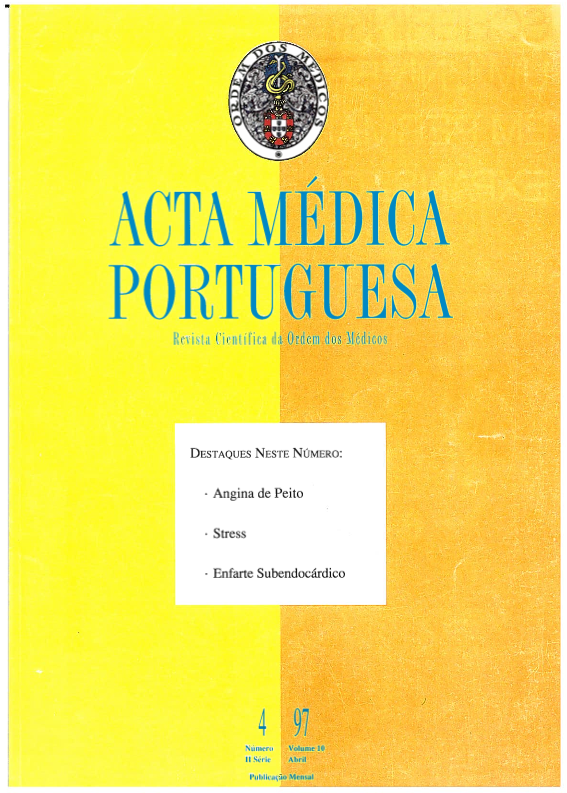Doença arterial coronária, perfusão miocárdica e função ventricular em enfartes do miocárdio com onda Q e sem onda Q.
DOI:
https://doi.org/10.20344/amp.2408Resumo
Controversy remains in considering non-Q wave myocardial infarction (NQMI) a distinct pathophysiological entity of Q wave myocardial infarction (QMI). In order to analyze the severity of coronary artery disease, extension of myocardial scar or myocardial ischemia and ventricular function, 78 consecutive patients with QMI and 32 with NQMI, mean age 55.4 +/- 8.5, not submitted to thrombolytic therapy, were studied. Coronary angiography, exercise thallium scintigraphy and radionuclide ventriculography were performed in all at least within 3 months of a prior myocardial infarction. In the present study the occurrence of QMI was significantly more frequent in older patients than NQMI. There was no prevalence of occlusion either in the right, left circumflex or left anterior descending coronary arteries in both groups. Ejection fraction, degree of occlusion and presence of collateral circulation showed an equal prevalence in QMI and NQMI patients. A higher incidence of multivessel disease was found in NQMI that had less necrosis than QMI patients. The prevalence of exercise induced thallium-201 redistribution defects within the infarct zone was substantially higher and involved more scar segments in NQMI patients. Physiological and clinical consequences of coronary thrombosis depends on the size and the number of diseased arteries, the approach the pathophysiologic consequences of coronary disease in terms of fractal structure has been suggested. A pronounced heterogeneity in regional myocardial blood flow in a fractal branching arterial network may be responsible for the pathophysiologic differences of coronary thrombosis between Q-wave and non Q-wave infarction.Downloads
Downloads
Como Citar
Edição
Secção
Licença
Todos os artigos publicados na AMP são de acesso aberto e cumprem os requisitos das agências de financiamento ou instituições académicas. Relativamente à utilização por terceiros a AMP rege-se pelos termos da licença Creative Commons ‘Atribuição – Uso Não-Comercial – (CC-BY-NC)’.
É da responsabilidade do autor obter permissão para reproduzir figuras, tabelas, etc., de outras publicações. Após a aceitação de um artigo, os autores serão convidados a preencher uma “Declaração de Responsabilidade Autoral e Partilha de Direitos de Autor “(http://www.actamedicaportuguesa.com/info/AMP-NormasPublicacao.pdf) e a “Declaração de Potenciais Conflitos de Interesse” (http://www.icmje.org/conflicts-of-interest) do ICMJE. Será enviado um e-mail ao autor correspondente, confirmando a receção do manuscrito.
Após a publicação, os autores ficam autorizados a disponibilizar os seus artigos em repositórios das suas instituições de origem, desde que mencionem sempre onde foram publicados e de acordo com a licença Creative Commons









